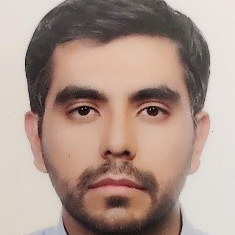Image Optimization in Remote Sensing
A special issue of Remote Sensing (ISSN 2072-4292). This special issue belongs to the section "Remote Sensing Image Processing".
Deadline for manuscript submissions: closed (31 March 2020) | Viewed by 49808
Special Issue Editors
Interests: metaheuristic algorithms; bioinspired computation; image processing; machine learning; optimization
Special Issues, Collections and Topics in MDPI journals
Interests: Image processing; optimization; metaheuristic algorithms; multiobjective optimization; machine learning; neural networks
Special Issues, Collections and Topics in MDPI journals
Interests: biomedical informatics; artificial intelligence; deep learning; machine learning; 6G networks; signal processing; internet of things
Special Issues, Collections and Topics in MDPI journals
Interests: image processing; signal processing; machine learning; artificial intelligence; bio-inspired algorithms; text mining
Special Issues, Collections and Topics in MDPI journals
Special Issue Information
Dear Colleagues,
Remote sensing is defined as the science of analyzing and monitoring physical characteristics of an area with the measurement of its reflected or emitted radiation. Typically, remote sensing information is obtained from airplanes or satellites at a great distance from the surface of the earth, enabling regular monitoring of land, ocean, and atmospheric conditions for multiple applications, such as mineralogy, biology, defense, and environmental preservation.
The data acquired for remote sensing can be represented in the form of images to make its analysis easier. However, such images present interesting characteristics such as a high spectral-spatial-temporal resolution, and multiple channels that provide valuable information independently or all together. These facts generate a big amount of information that must be properly and accurately analyzed. Some of the issues related to images from remote sensing applications can be treated as optimization problems. Thus, the necessity to design and implement optimization methods that possess a superior performance on the search for optimal solutions for remote sensing applications arises.
This special issue concerns the implementation and development of optimization techniques able to find the best solutions for processing remote sensing images. In general, in this special issue the latest advances and trends of optimization algorithms for remote sensing image processing will be presented, addressing original developments, new applications, and practical solutions to open questions. The aim is to increase the data and knowledge exchange between the optimization and remote sensing communities and allow experts from other areas to understand the inherent problematics of remote sensing. Moreover, authors are encouraged to present hybrid methods that might include the use of machine learning approaches.
The topics for this Special Issue include, but are not limited to, the following:
- 3D radar and 3D sonar imaging
- Sonar image processing, data reduction, feature extraction, and image understanding
- Interferometric methods
- Sparse image reconstruction
- Hyperspectral images
- Object extraction and accuracy evaluation in 3D reconstruction
- Satellite images
- Surveillance systems
- Multi-sensor data fusion
- Image segmentation
- Multilevel thresholding
- Clustering
- Metaheuristic Algorithms
- Classical optimization techniques
- Hybrid optimization mechanisms
- Machine learning
- Fuzzy logic approaches
- Neural computing
- Evolutionary computation
- Multi-objective optimization
- Many-objective optimization
- Hyper-heuristics
- Heuristics
- Swarm algorithms
- Feature selection
Dr. Diego Oliva
Dr. Salvador Hinojosa
Dr. Mohamed Abd Elaziz
Dr. Ahmed A. Ewees
Guest Editors
Manuscript Submission Information
Manuscripts should be submitted online at www.mdpi.com by registering and logging in to this website. Once you are registered, click here to go to the submission form. Manuscripts can be submitted until the deadline. All submissions that pass pre-check are peer-reviewed. Accepted papers will be published continuously in the journal (as soon as accepted) and will be listed together on the special issue website. Research articles, review articles as well as short communications are invited. For planned papers, a title and short abstract (about 100 words) can be sent to the Editorial Office for announcement on this website.
Submitted manuscripts should not have been published previously, nor be under consideration for publication elsewhere (except conference proceedings papers). All manuscripts are thoroughly refereed through a single-blind peer-review process. A guide for authors and other relevant information for submission of manuscripts is available on the Instructions for Authors page. Remote Sensing is an international peer-reviewed open access semimonthly journal published by MDPI.
Please visit the Instructions for Authors page before submitting a manuscript. The Article Processing Charge (APC) for publication in this open access journal is 2700 CHF (Swiss Francs). Submitted papers should be well formatted and use good English. Authors may use MDPI's English editing service prior to publication or during author revisions.
Keywords
- Remote sensing images
- Image processing
- Global optimization
- Multi-objective optimization
- Hybrid optimization algorithms
- Machine learning approaches







